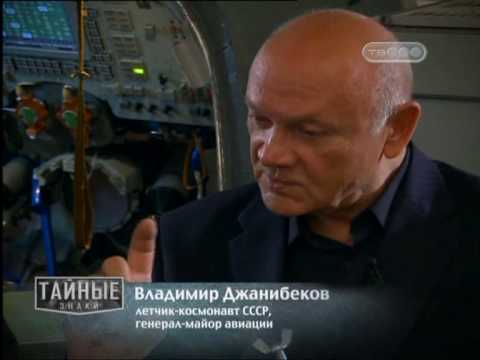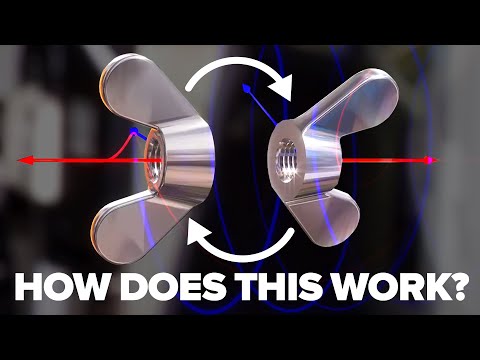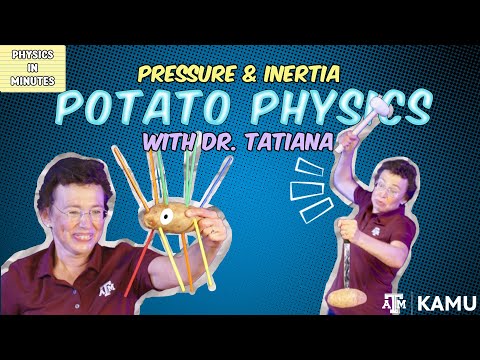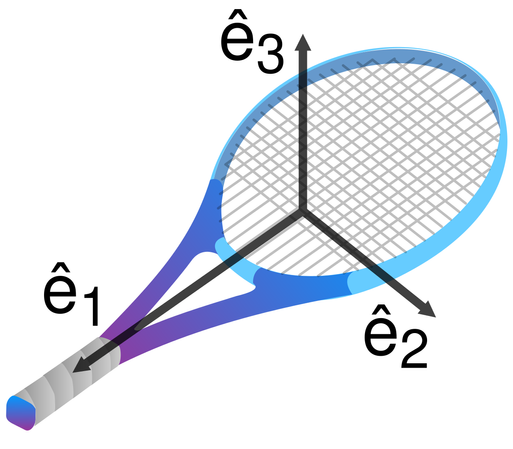The article said I could do it with a remote control, so I did. In 9 tries, it did the flip in all but 1. Weird. 😳
Screw going to Mars. This is what mankind was made for.
Looks like a Chaos effect.
Also. This says to me that when we write computer game physics, we should not try to script the object's *movement*, we should always try to script its *components* from first principles. That way, apart from minor collisions not flipping the horse and cart into the stratosphere (cough), we might actually once in a while get to see real world unexpected effects.
ALT TEXT (this is all off the cuff and I'm typing this on my phone; no ChatGPT, no Google, no nothing; please correct anything I may have wrong here, or worded funny, etc.):
The video shows by demonstration a really cool behavior of objects in motion, understood to the study of physics according to intermediate axis theorem—also called tennis racket theorem, or the Dzhanibekov effect. We see an astronaut spin a T shaped handle that is attached to a control panel, and it unscrews from the panel, as one would expect. Curiously, the handle—which is, unsurpisingly, floating due to this happening in space—continues to spin while facing the same way with respect to the panel as it did initially, only briefly; it then flips around 180° in said direction, such that the horizontal section where it's meant to be grabbed in order to use it, is then facing towards the panel instead of away from it. This orientation then reverses again, and then reverses again, and so on and so forth, repeatedly. Like that weren't enough, it just keeps spinning the same way it was already spun by the astronaut, while doing the other thing that was just described (taken into account that it turns itself around going the other way whenever it does, of course). The reason why this is called intermediate axis theorem is because all objects with mass, while in motion, will always rotate upon whichever axis provides the highest moment of inertia no matter what, unless otherwise acted upon by an outside force; this axis is, of course, the intermediate axis. The reason why this is also called tennis racket theorem is because it is observed while fully affected by gravity, by throwing a tennis racket end-over-end directly upwards: it is physically impossible for it to rotate upon said axis without also rotating upon the axis 90° perpendicular, and it will have already rotated upon the latter to such extent by the time whoever threw it has had a chance to catch it by the handle again, that the net will no longer be facing in quite the same direction it was when it was thrown. The author of this alt text assumes that Dzhanibekov is most likely who first discovered this, or something, although he doesn't remember offhand and doesn't feel like looking it up. He was taught K-12 at home by a former private school teacher and never went to school in a conventional sense, he earned his GED in 2011 at the age of 17, and he has precisely no qualifications otherwise.

@joncounts @countdracula @wonderofscience You can see and hear Dzhanibekov himself talk about it here: https://www.youtube.com/watch?v=dL6Pt1O_gSE
Let me know if you understand what the potato-with-a-threaded-nut is about half-way through.

джанибеков
@libroraptor @countdracula @wonderofscience Thanks. I love how Dzhanibekov demonstrates it with a potato. Very Russian. Veritasium has a good explanation of the effect too. That threaded nut on the potato is needed to make that third axis of rotation unstable (moment of inertia).
The Veritasium video covers some of the history of the effect and how Russians kept the effect in space secret for a decade.
Fascinating stuff.

The Bizarre Behavior of Rotating Bodies
@libroraptor @countdracula @wonderofscience It looks like I spoke too soon. I searched and it turns out #PotatoPhysics is a thing!

Dr. Tatiana Does Potato Physics! | Physics in Minutes
@joncounts @countdracula @wonderofscience Just like setting the blade of a coffin plane!
Her accent is a big asset here. American flamboyance isn't a bad thing in lecturing either, but I can take it only in small doses.
@libroraptor @joncounts @countdracula @wonderofscience
I spent years studying pointy headed economics and finance. There is much "physics envy" in economics...
But we used "potatoes" as unit of currency in theoretical finance. So score one! Physics can kiss my econometric arse!!
Never, ever, thought I would be able to say that. Thank you
I guess I make changes to avoid this. I was thinking about changes anyway. Not tonight, though. The joys of electronics.
Found it meanwhile: https://en.m.wikipedia.org/wiki/Salyut_7_(film)
Thanks!
Memo
When designing an orbital ring habitat, do be sure to have the axial complex positioned to only one side of the ring.


 🇨🇦
🇨🇦

